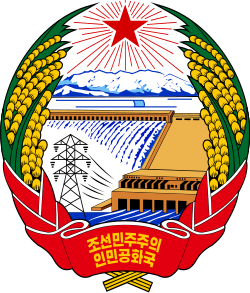6th Central People's Committee | |
|---|---|
 State Emblem of North Korea | |
| 15 December 1977 – 5 April 1982 (4 years, 111 days) Overview | |
| Type | Session of the Central People's Committee |
| Election | 1st Session of the 6th Supreme People's Assembly |
| Leadership | |
| President | Kim Il Sung |
| First Vice President | Kim Il |
| Vice President | Kang Yang-uk Pak Song-chol |
| Secretary-General | Yim Chun-chu |
| Members | |
| Total | 15 |
The 6th Central People's Committee (CPC) of North Korea was elected by the 1st Session of the 6th Supreme People's Assembly on 17 December 1977. [1] It was replaced on 5 April 1982 by the 7th CPC. [2]
